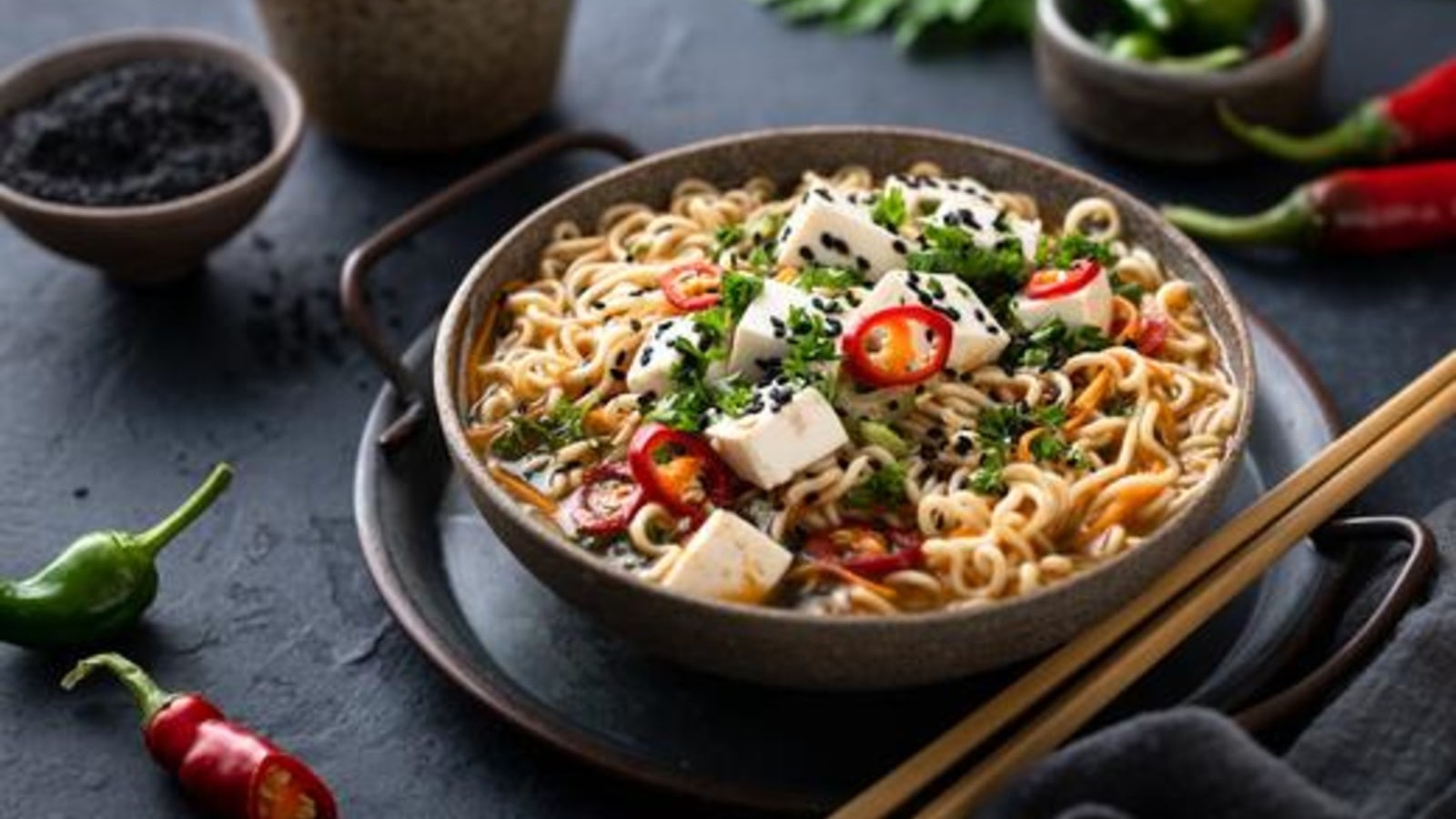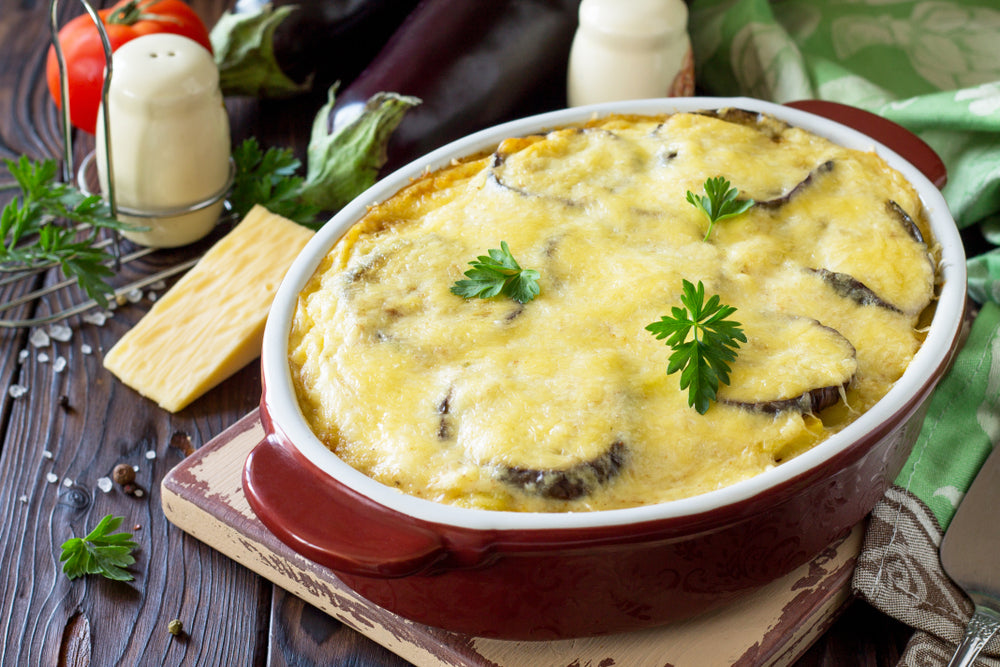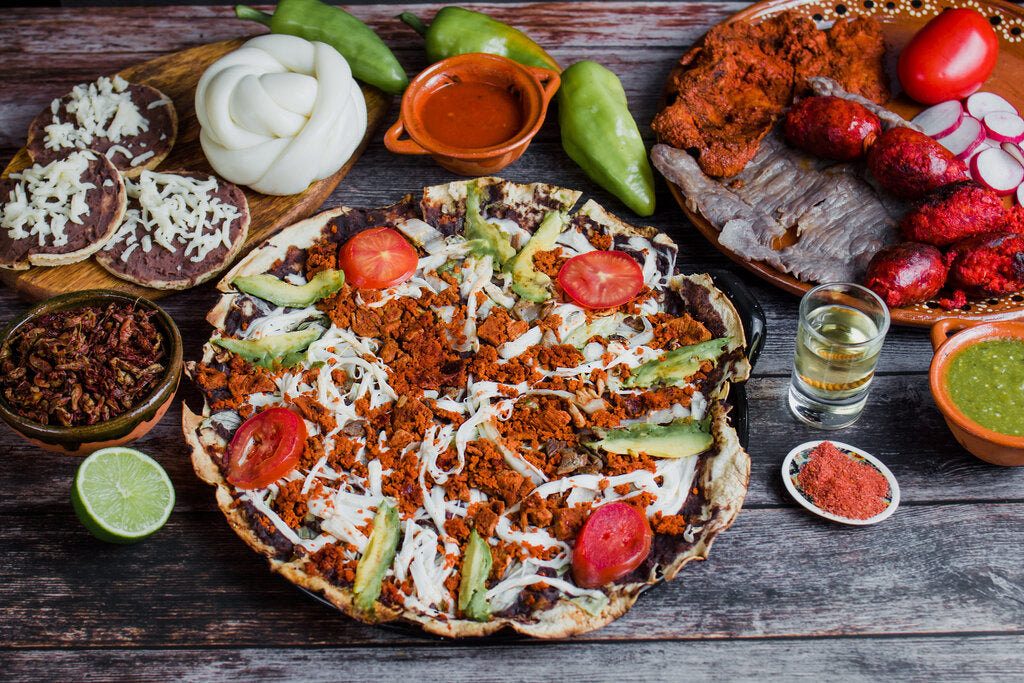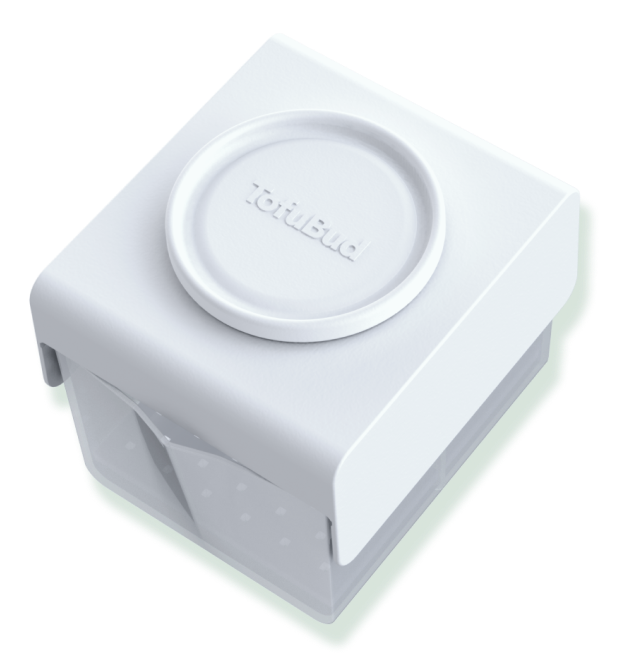Red and white miso meets traditional ramen spice sambal oelek, fragrant garlic, and fresh ginger. Pour yourself a hot bowl of this vegetarian comfort food and slurp up some spicy ramen noodles in our homemade ramen broth.
When I was a child, the only ramen I had eaten was a dry, sad package of instant Mr. Noodles. Things have changed massively in the last 20 years, and authentic versions of ramen are more readily available in America.
These are some awfully delicious bowls of goodness - super spicy ramen noodles float in a ginger miso broth with shiitake mushrooms, fried tofu, chopped green onion, boiled egg, and bits of roasted seaweed.
This vegetarian version of spicy ramen will stick to your ribs more than a traditional soup because it's stuffed full of high-protein ingredients.
We've kept the meat out of this vegetarian recipe, and you can remove the soft-boiled eggs to make this a vegan spicy ramen.
Between making a miso paste, frying the tofu, and making broth, this tofu ramen takes under 60 minutes to reach the dinner table.
Follow the steps below to get started on your spicy vegan ramen!
What is ramen?
Ramen is a Japanese noodle soup with Chinese origins.
The dish initially consisted of Chinese wheat noodles in salty broth, topped with roasted pork. Ramen originated in China and made its way to Japan in the late 1800s, where it evolved into the ramen we know today.
There was a massive rise in the popularity of ramen after World War II when the US flooded Japanese markets with cheap wheat, and again in the 1990s and 2000s when a big Japanese economic downtown meant people turned toward inexpensive food options.
Ramen is typically made with a meat or fish broth base (in our case, vegetable broth) and is flavored with soy or miso.
What makes spicy ramen noodles so distinctive from other noodles?
One ingredient - kansui. This alkaline salt regulates the dough's acidity, which gives ramen noodles their distinct yellow hue and firm texture compared to other noodles.
Nutrition information - Spicy ramen recipe
Serves: 4
Calories Per Serving: 719 kcal; Total Fat 29.6g; Sodium 1279.4mg; Carbohydrates 74.8g; Sugars 14.2g; Protein 38.7g
Homemade spicy ramen recipe: Tips + FAQ
Choosing your ramen
You can find dried ramen and fresh, refrigerated ramen noodles at most Asian markets or local grocery stores.
Either one will work well for making these spicy ramen noodles!
Gluten-free options
There are brown rice or millet ramen noodles at Whole Foods and other specialty grocery stores. If you're using it, check your label to ensure that your soy sauce is gluten-free, as well.
Choosing your tofu
The only varieties of tofu in ramen that work are firm and extra-firm - these two types of tofu are perfectly-suited for cooking. Once firm tofu is pressed, most of its water is removed, which allows the tofu to crisp up beautifully when frying or baking.
Softer tofu, like the medium, soft, and silken styles, do not cook well. These types are incredibly soft and delicate. Soft tofu has a high water content that falls apart entirely under heat.
Soft tofus shine when used in recipes to replace milk or cream.
Choosing a non-dairy milk
If you consume dairy, you can use cow's milk in your recipe. We chose to use our favorite non-dairy milk, oat milk. It has a subtly nutty flavor and smooth, creamy texture.
You can also try almond, soy, or rice milk.
Whichever milk you choose, make sure you pick the unflavored and unsweetened version. Some of the labels look very similar, and I've grabbed the wrong one by mistake more than once. As tasty as chocolate almond milk is, it's not going to work well in a recipe for spicy ramen.
Miso, sambal oelek and mirin
If you haven't dabbled in Asian cooking, these ingredients may be a mystery to you.
Miso is a fermented soybean paste that adds a salty, umami flavor to any dish.
- White miso is fermented for a short time, making it mild, delicate, and less salty.
- Yellow miso has been fermented slightly longer than white and has developed more robust flavors.
- Red miso is fermented the longest and has a saltier, more pungent taste than the other varieties.
White miso is a little too sweet for ramen on its own, so we mixed both white and red to build a balanced flavor in our ramen broth.
Sambal oelek is an Indonesian sauce made of spicy red chilis that often contains ginger, garlic, green onion, sugar, and lime juice. It sometimes has shrimp paste, so check your label before cooking if you are making a vegetarian or vegan ramen.
Lastly, mirin is a Japanese rice wine that is sweeter than other rice wines - it has a higher sugar content and relatively low alcohol content.
Substitutes for fresh ingredients
- If you don't have fresh onion, you can substitute 1 tsp of onion powder instead.
- In place of fresh ginger, use ¾ tsp of ground ginger.
- Use 1 tsp of garlic powder if you have no garlic cloves on hand at home.
- Dried mushrooms can easily replace the fresh shiitakes in this recipe. If you're using dried, skip the stir-frying step and toss the mushrooms directly into the stock and milk to reconstitute them.
Add-in options
Like most soups, there are plenty of things to add to ramen that will make your bowl extra-tasty.
Here are some of our favorites to add to spicy ramen noodles:
- Chili bean paste
- Kimchi
- Sweet bell peppers
- Baby spinach or kale
- Sriracha
- Bok choy or Chinese spinach
- Gochujang (chili pepper paste)
- Sliced jalapeno
- Fresh cilantro
- Shichimi togarashi (Japanese 7-spice blend)
- Celery
- Snap peas
- Water chestnuts
- Bean sprouts
Is spicy ramen healthy?
Store-bought instant ramen contains MSG and a load of sodium. While spicy ramen still has a decent sodium dose, it is free of MSG and other harmful chemicals. If you're concerned about sodium levels, swap the vegetable stock out for a low-sodium version.
Ramen contains high-protein tofu and eggs and plenty of essential vitamins and minerals. Miso, a fermented paste, promotes healthy gut bacteria and digestive balance.
The noodles are high in carbs, but you can lighten up your ramen by cutting down the noodles and tossing in some extra veggies instead.
Storage tips
Our spicy ramen noodles do not store well, as the broth continues to cook the ingredients once they are in the bowl.
You can, however, keep just the ingredients separated for later consumption.
Keep your plain, spicy ramen broth in the fridge for 2-3 days. You can also save cooked ramen noodles in a separate, airtight container in the refrigerator for 2-3 days. Pre-chop your veggies, so they're ready to go when you want to make the spicy ramen bowls.
Reheat and add the noodles and other add-ins just before serving.
Our spicy ramen cannot be frozen.
Final word: Enjoying your spicy miso ramen recipe
This spicy ramen is leaps and bounds better than the pre-packaged, MSG-laden instant varieties.
If you like your ramen extra spicy, add some sriracha, gochujang, or sambal oelek to up the heat level.
Experiment with different add-ins to keep the dish fresh; we personally loved the texture of sweet, red bell peppers and fresh, crunchy white bean sprouts.
Enjoy your spicy hot pot of ramen noodles!









Leave a comment (all fields required)